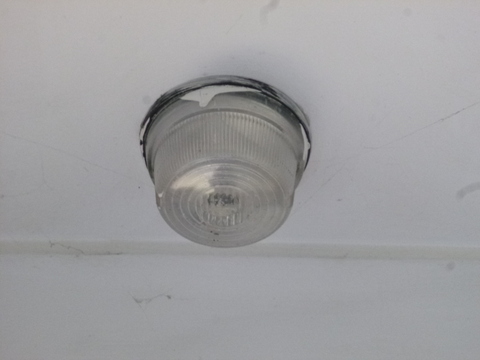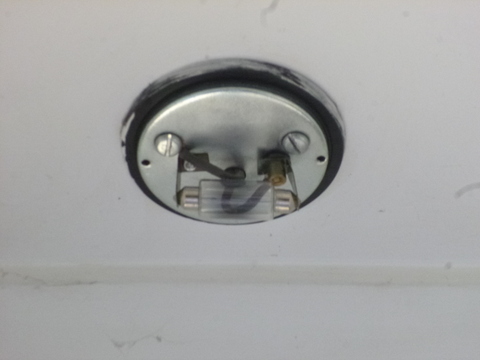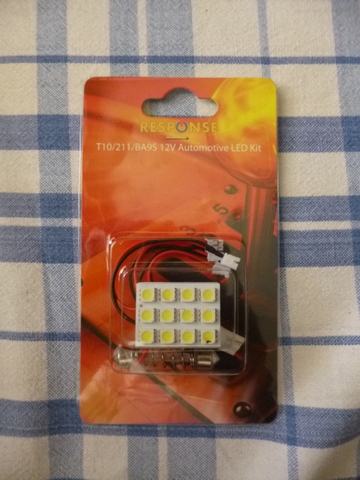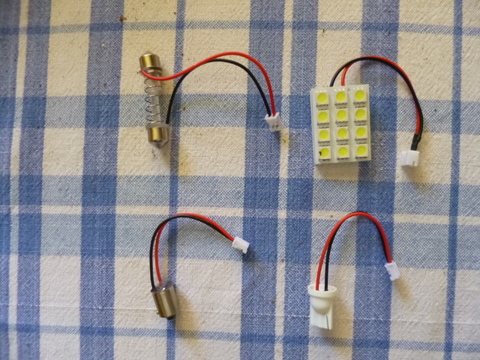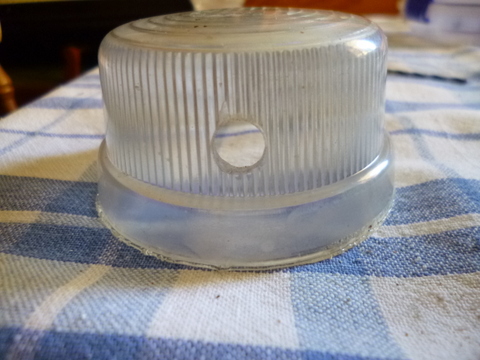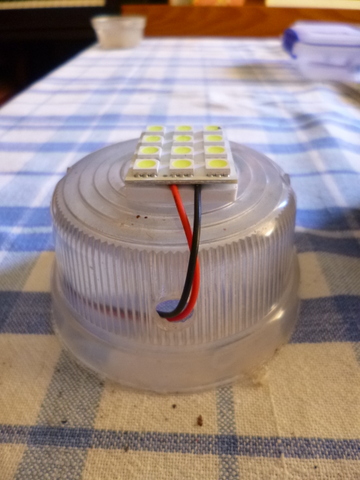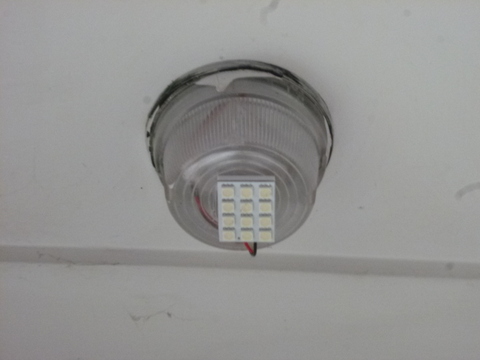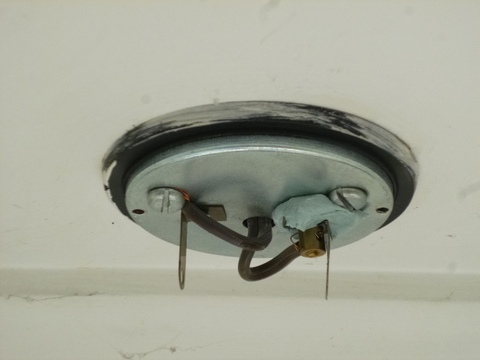Back in the “good old days” when I first put my stand-alone 12 volt system in place I used what were called “trailer lights” in each room to provide lighting. The trailer lights had a round steel base and a clear round cover that could be bought in red, orange or clear. They had a double ended incandescent festoon bulb that consumed 18 watts of power. For lighting up the house I only bought the clear ones. Later on they started making them with a plastic base but the bases had the annoying habit of melting under the heat of the incandescent bulb so I stopped buying them.
These festoon bulbs did not really produce a lot of light, we had two in the lounge room but they really only produced enough light to move around safely, certainly not enough to read or do fine work. In smaller rooms where there was no need for a lot of light such as the toilet and the laundry they were enough, barely, so have not been worth replacing with the much more expensive high efficiency fluorescents and so have been in service for over 25 years. Up to now.
It has recently come to my attention that LED replacements are being made for festoon bulbs so that by changing the infrastructure just a tad, I could get more light for less power consumption from the same basic light fitting. Winner!
The fittings which I bought (for about $10 a piece) were clearly designed for automotive use and the LED fitting could be mated up with 3 different types of 12 volt automotive sockets one of which was the festoon type. There was also a push in and bayonet type light fitting connection.
To fit the LED setup I had to unscrew the clear cover and drill a hole in the side of the cover for the wires to pass through it, so I could mount the LEDs on the outside of the cover. I drilled a 1/8”pilot hole so that the bigger drill didn’t wander on the smooth curved surface of the cover, then followed up with a 21/64” drill, mainly because it was the smallest hole I had a drill for which would still admit the socket to connect the festoon fitting with the LED lights. A bit larger would suffice if you didn’t have these particular sizes.
Once the hole was drilled it was a simple matter to insert the spring loaded festoon connector into the bulb terminal connections, then thread the LED socket through the hole and plug it in to the socket on the festoon wires. The LEDs are adhesive backed so I just stuck them onto the surface of the cover and screwed the cover back onto the base. Festoon bulbs, because they are incandescent are not sensitive to the way the 12 volt power runs, but LEDs being diodes, are. If you switch the light on and nothing happens, reverse the festoon connector and that should fix the problem. If not, you’re on your own!
That was the way the first one went anyway, but the second was a bit more complicated. The positive terminal is insulated from the rest of the base (which is connected to the negative wire) by a small plastic grommet. This had put up with reasonably high temperatures from the incandescent bulb over the last 25 years and had become quite brittle so that when I removed the bulb the positive terminal came adrift from the base. (cue lots of naughty words).
So I needed to re-affix the terminal with enough stiffness so that the spring between the festoon contacts would not push the terminal out too far, but also so that the terminal was insulated from the base plate. I was able to do this with some epoxy putty which I formed into a new grommet, then allowed to cure before fitting in the festoon contact set-up. It's not pretty but it does the job.
They have been in place for a couple of months and are doing the job well. It is a cheap and fairly efficient way to provide lighting if you have a mind to develop your own off-grid 12 volt power system.
More about 12 volt lighting and power is available here



